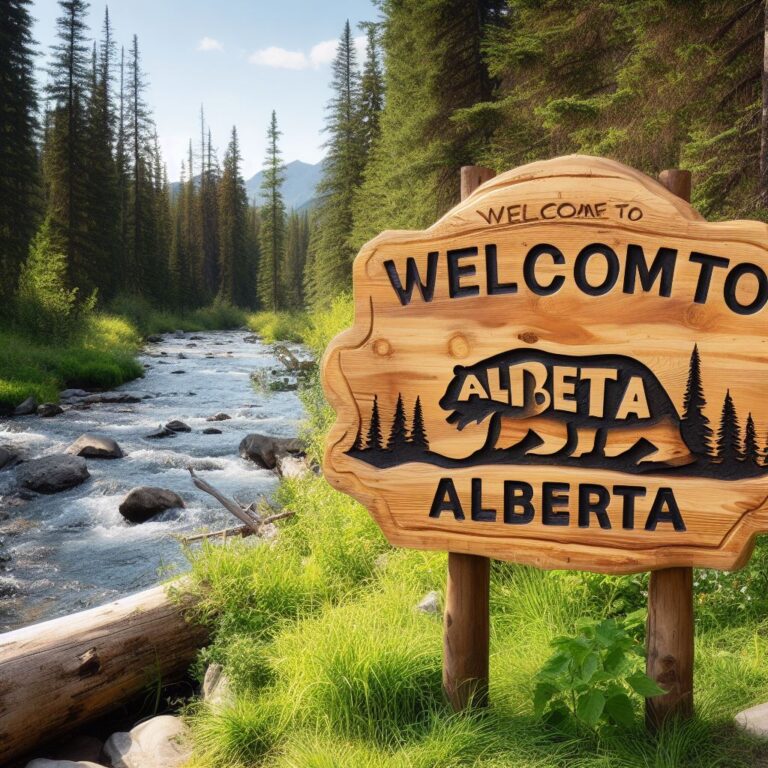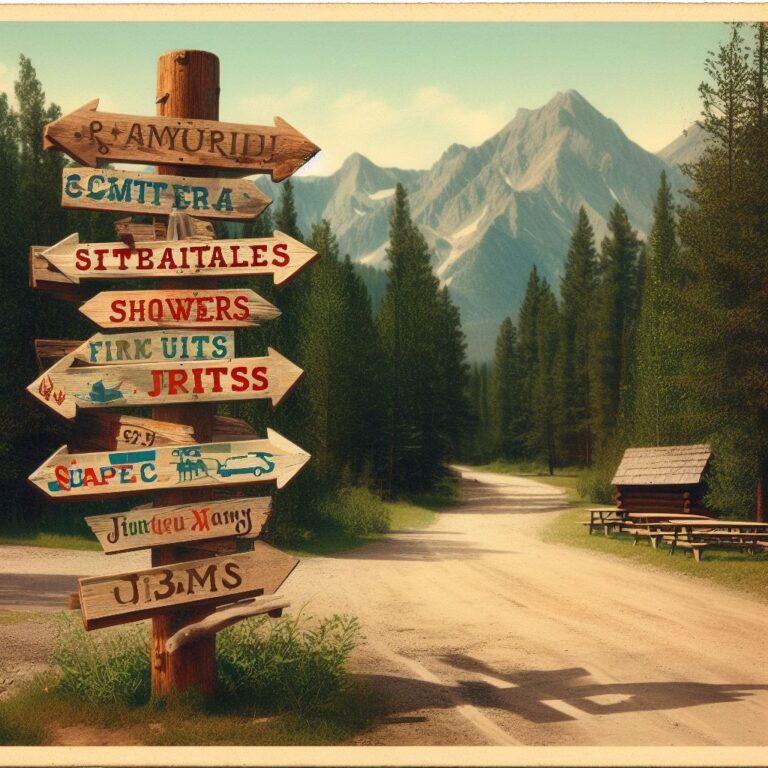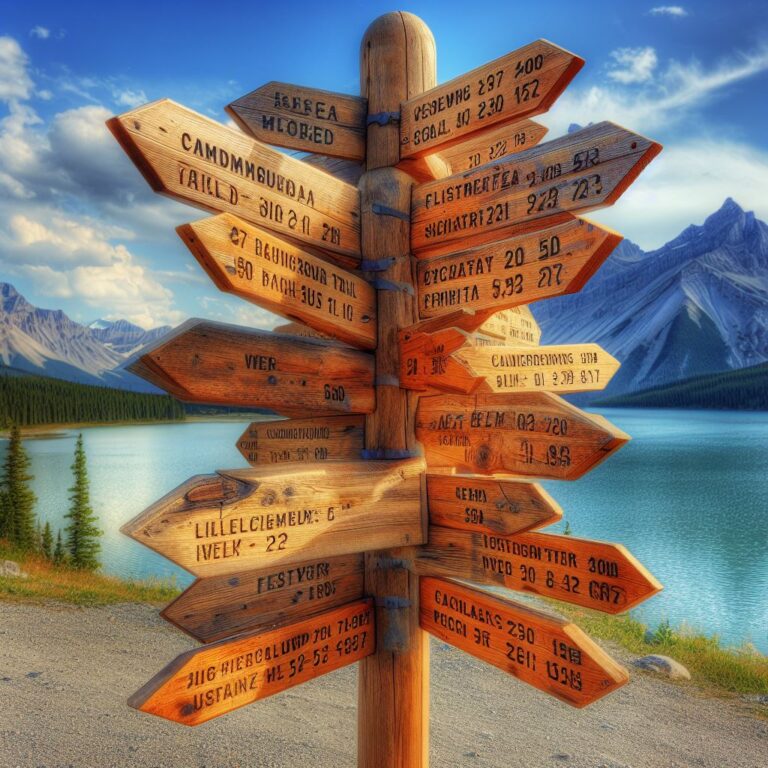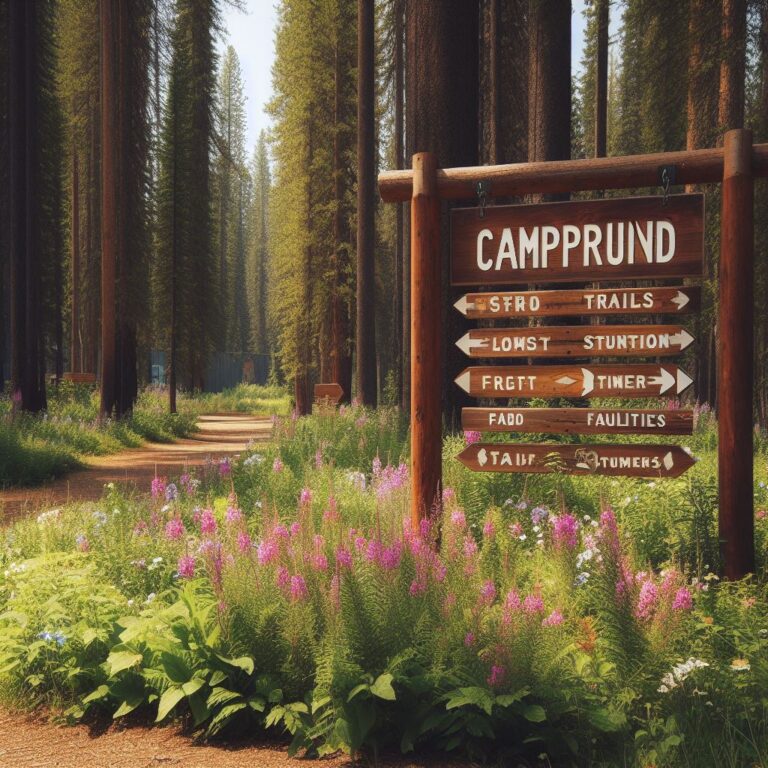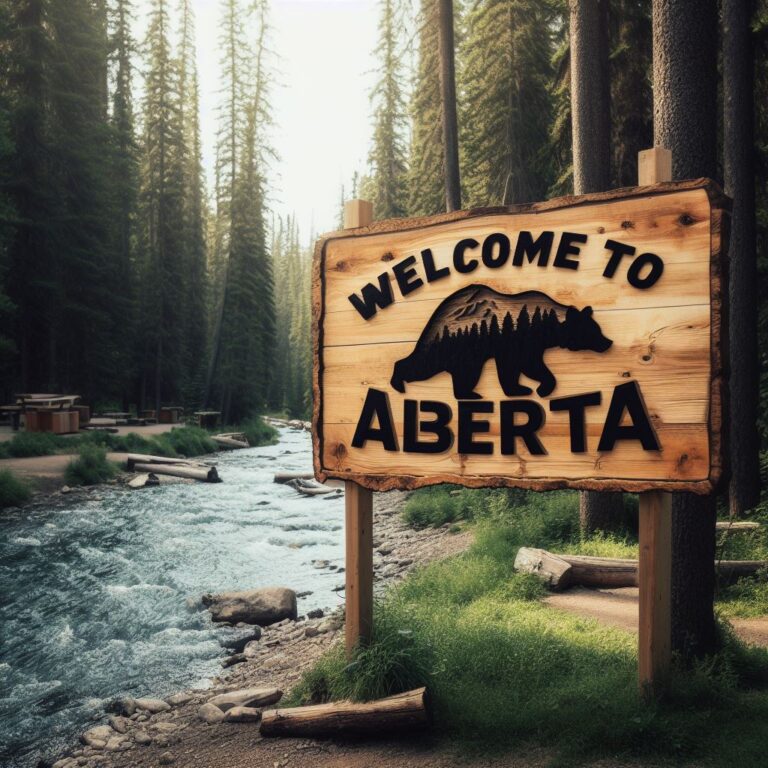Jasper’s Jewel: The Majestic Athabasca Glacier – A Comprehensive Guide
The Athabasca Glacier, one of the largest glaciers in the Canadian Rockies, captivates visitors with its awe-inspiring beauty and grandeur. Located in Jasper National Park, this majestic natural wonder offers a comprehensive guide for those seeking to explore its breathtaking landscape. With its shimmering ice formations and pristine surroundings, the glacier provides a truly unforgettable experience for nature enthusiasts and adventure seekers alike.
Embarking on a journey to the Athabasca Glacier allows visitors to witness the immense size and scale of this geological marvel. Spanning approximately six kilometers in length and covering an area of about six square kilometers, the glacier showcases the power and resilience of nature. As visitors traverse the icy expanse, they are enveloped by a sense of wonder and amazement at the sheer magnitude of this frozen giant. From towering ice walls to gaping crevasses, the unique features of the Athabasca Glacier continue to astound and captivate all who venture into its icy realm.
– The Formation of the Athabasca Glacier: Unveiling the geological processes that led to the creation of this majestic natural wonder.
The Athabasca Glacier, a stunning natural marvel located within the Canadian Rockies, is a result of intricate geological processes that unfolded over thousands of years. Its formation can be traced back to the last ice age, approximately 10,000 years ago. During this period, vast amounts of snowfall accumulated in the upper reaches of the glaciers’ surrounding mountains, eventually transforming into ice due to the immense pressure exerted by the weight of the overlying snow.
Over time, a gradual process called “nivation” occurred, where the snow and ice began to move downslope due to gravity. As the ice mass descended, it eroded the underlying rock and scoured out a valley through which it flowed. These erosional forces, combined with the freezing and thawing of water within cracks and joints, led to the widening and deepening of the valley, shaping it into what is now known as the Athabasca Glacier. This long and intricate journey, marked by intense geological activity, has resulted in a magnificent landscape that continues to awe visitors from around the world.
– The Size and Scale of the Athabasca Glacier: Discovering the vastness and impressive dimensions of one of the largest glaciers in the Canadian Rockies.
Stretching over six kilometers long and spanning an area of approximately six square kilometers, the Athabasca Glacier stands as one of the largest glaciers in the Canadian Rockies. Its massive presence commands attention, with towering ice formations and impressive crevasses that seem to stretch into infinity. From a distance, it is difficult to truly grasp the immensity of this natural wonder, but as you draw closer, the sheer size and scale of the glacier become increasingly apparent.
Standing at the toe of the glacier, one can’t help but feel small and insignificant in comparison to the vastness of this icy giant. The ice walls, rising up to 30 meters in height, create a daunting backdrop against the surrounding mountain peaks. As you explore further, the enormity of the glacier becomes even more evident when you encounter the deep blue crevasses that crack through the surface, offering a glimpse into the depths of this frozen world. It is an awe-inspiring sight that leaves visitors in awe of the natural forces that have shaped and molded this colossal glacier over thousands of years.
– The Unique Features of the Athabasca Glacier: Exploring the distinct characteristics that set this glacier apart from others around the world.
One of the most striking features of the Athabasca Glacier is its vibrant blue coloration. This unique hue is a result of the glacial ice absorbing all colors of the visible spectrum except for blue, which is reflected back to our eyes. As a result, visitors to the glacier are often mesmerized by the intense blue shades that permeate the ice, creating a captivating visual spectacle.
Another distinctive characteristic of the Athabasca Glacier is its constant movement. Unlike most glaciers, which move at a relatively slow pace, the Athabasca Glacier demonstrates a remarkable speed, advancing at an average rate of 5 meters per year. This dynamic process gives the glacier a sense of vitality and reinforces its status as a living entity shaped by the forces of nature. With each passing year, the glacier transforms and shifts, leaving a lasting impression on those who witness its ever-changing presence.
– Climate Change and the Athabasca Glacier: Investigating the impact of global warming on the Athabasca Glacier and its future survival.
As the global climate continues to change at an alarming rate, the impact on the Athabasca Glacier is becoming increasingly evident. Rising temperatures have led to the accelerated melting of the glacier, causing it to shrink in size year after year. This reduction in size has significant implications not only on the landscape but also on the surrounding ecosystem and communities that depend on the glacier for water resources.
The Athabasca Glacier serves as a vital source of freshwater for rivers and streams in the region, supporting various plant and animal species in its vicinity. However, the loss of the glacier due to climate change threatens to disrupt this delicate balance. The reduced water flow downstream can lead to changes in river levels, affecting aquatic habitats and jeopardizing the survival of species that rely on these environments. Additionally, the loss of the glacier impacts the tourism industry that depends on its majestic presence, highlighting the far-reaching consequences of climate change on both natural and human systems.
– The Importance of the Athabasca Glacier: Understanding the ecological significance and role of this glacier within the surrounding ecosystem.
The Athabasca Glacier plays a crucial role in the surrounding ecosystem, contributing to the biodiversity and overall health of the region. As a source of freshwater, the glacier provides a vital water supply for numerous plants, animals, and human communities downstream. Its meltwater feeds into the Athabasca River, sustaining a diverse array of aquatic life and supporting the growth of vegetation along its banks. This water source also plays a role in regulating ecosystems and maintaining the balance of the local climate.
Furthermore, the Athabasca Glacier serves as a habitat for various species that have adapted to survive in the harsh glacial environment. Despite the extreme conditions, some hardy plants and animals, such as mosses, lichens, and insects, have found a niche on the glacier, forming complex ecosystems and interdependencies. These unique microhabitats and ecological communities offer valuable insights into the adaptability and resilience of life forms in the face of extreme environmental challenges. Understanding and preserving the ecological significance of the Athabasca Glacier is crucial for the overall health and sustainability of the surrounding ecosystem.
– Glacial Phenomena: Unraveling the fascinating phenomena associated with the Athabasca Glacier, including crevasses, icefalls, and seracs.
Glacial phenomena surrounding the Athabasca Glacier are truly awe-inspiring, captivating visitors with their sheer magnitude and beauty. One of the most remarkable features of the glacier is the presence of crevasses, deep cracks that form as a result of the glacier’s movement. These crevasses can range in size from narrow openings to gaping chasms, creating a stunning and treacherous landscape that demands both caution and respect.
Another captivating phenomenon associated with the Athabasca Glacier is the presence of icefalls. As the glacier descends from the Columbia Icefield, it encounters steep slopes and cliffs, leading to the formation of cascading icefalls. These breathtaking spectacles occur when the glacier’s mass shifts and breaks apart, causing large sections of ice to tumble down slopes, creating a dynamic and ever-changing display of nature’s power. Standing in the presence of an icefall, one can’t help but marvel at the sheer force and beauty of the Athabasca Glacier.
– Exploring the Athabasca Glacier: Embarking on an unforgettable journey to experience the glacier up close through guided tours and hikes.
Embarking on a journey to explore the Athabasca Glacier is a truly awe-inspiring experience that promises to leave a lasting impression. Guided tours and hikes offer visitors the opportunity to witness the grandeur of this magnificent natural wonder up close. As you step onto the glacier, you will be engulfed in a world of pristine ice and breathtaking beauty.
Guided tours provide invaluable knowledge about the glacier’s formation, size, and unique features, enhancing your understanding and appreciation of this remarkable geological phenomenon. Expert guides share fascinating insights into the glacial processes that have shaped the Athabasca Glacier over thousands of years, bringing the scientific wonders of the glacier to life. With their guidance, you can witness incredible phenomena such as crevasses, icefalls, and seracs, marveling at the raw power and immense scale of this ancient ice formation.
Hiking on the glacier allows you to immerse yourself in this icy wonderland, as you walk upon the icy surface surrounded by towering snow-capped peaks. Each step offers a new perspective, allowing you to be fully immersed in the majesty of the glacier. From the glistening blue hues of the ice to the crisp mountain air, every moment spent exploring the Athabasca Glacier will be etched into your memory forever. So lace up your hiking boots and get ready for an unforgettable adventure to one of nature’s most extraordinary marvels.
– Flora and Fauna of the Athabasca Glacier: Delving into the diverse plant and animal life that thrives in the glacier’s vicinity.
The Athabasca Glacier, nestled within the Canadian Rockies, is not only a marvel of nature but also a haven for a diverse range of plant and animal species. Despite the harsh conditions associated with its icy surroundings, the glacier’s vicinity sustains a surprising abundance of life.
In terms of flora, the Athabasca Glacier region showcases a resilient tapestry of vegetation. Lichens and mosses, adapted to withstand extreme cold and scarcity of nutrients, cling to rocks and crevices, creating pockets of vibrant green in an otherwise desolate landscape. These hardy plants are essential for stabilizing the soil and providing an anchor for other plant species to establish themselves. Amidst the rocky terrain, hardy alpine flowers, such as purple saxifrage and arctic avens, dot the landscape with their delicate blooms, adding splashes of color to the icy vista.
The glacier’s vicinity also supports a surprising variety of animal life. Despite the challenging conditions, a variety of birds can be spotted in the area, including ravens, ptarmigans, and golden eagles. Their ability to adapt to the cold climate and find sources of food in this harsh environment is a testament to nature’s resilience. Mammals such as mountain goats and hoary marmots also call this region home, navigating the steep slopes with ease and finding sustenance amidst the rugged terrain.
The diversity of flora and fauna in the vicinity of the Athabasca Glacier is a testament to the resilience and adaptability of life in extreme environments. Although the glacier’s icy embrace may seem inhospitable, it provides a unique habitat for a wide range of species that have found ways to thrive in this majestic natural wonder.
– Indigenous Connections to
Indigenous Connections to the Athabasca Glacier have deep roots that intertwine with the land’s rich history and cultural significance. For centuries, the Athabasca Glacier has been a sacred place for the Indigenous peoples of the region, serving as a source of spiritual connection and a gateway to their ancestral traditions. The glacier is revered as a symbol of strength and resilience, embodying the timeless wisdom of these communities and their profound respect for the natural world.
Indigenous communities view the Athabasca Glacier as a living entity, a vital part of their cultural heritage. It is a place of storytelling, where myths and legends are passed down through generations, weaving together the tapestry of their collective identity. The glacier’s ice and pristine beauty hold particular importance, serving as a source of inspiration for art, music, and dance. By preserving their connection to the Athabasca Glacier, Indigenous communities cherish their ancestral knowledge and play a crucial role in safeguarding the land for future generations.
- Floating Stone Lake Recreation Area – AB - March 14, 2024
- Katherine’s Camping Corner – Athabasca, Alberta - March 14, 2024
- Prairie Peaks Campground – Hill Spring, Alberta - March 13, 2024


